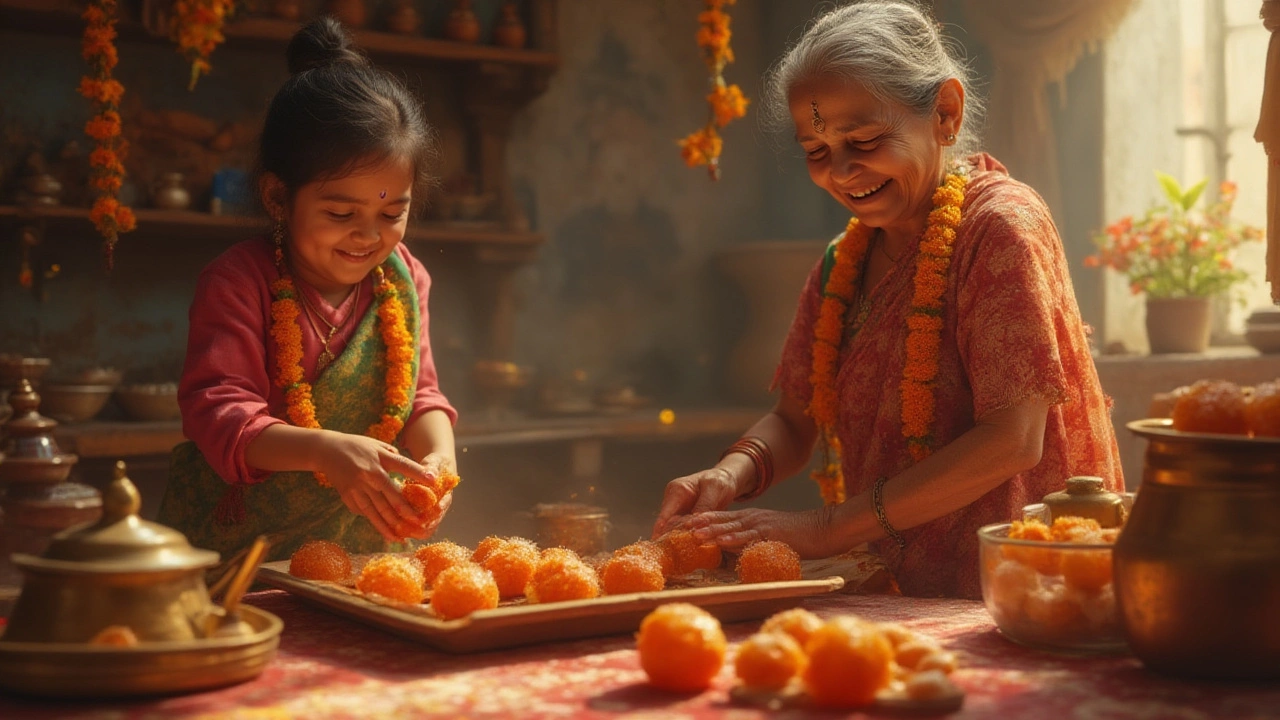Famous Indian Mithai – Classic Sweet Treats Everyone Should Try
If you’ve ever wondered why Indian desserts get such rave reviews, the answer lies in the variety of mithai that pops up at every festival, wedding, and family gathering. From crunchy jalebi to soft rasgulla, each sweet carries a story, a regional twist, and a handful of flavors that make it unforgettable. Below you’ll find the most loved mithai, why they matter, and how to eat them without overdoing the sugar.
Top Must‑Try Mithai
First up is gulab jamun. These deep‑fried milk‑ball treats soak up a fragrant rose‑scented syrup and melt in your mouth. Next, laddu – round, nutty bites made from gram flour, ghee, and sugar, often flavored with cardamom. Barfi comes in many flavors – coconut, chocolate, pistachio – and its smooth texture makes it a party favorite. Don’t miss jalebi, the pretzel‑shaped, orange‑gold spirals that are crisp on the outside and syrupy inside. Finally, rasgulla from Bengal: spongy cheese balls floating in light syrup, perfect for cooling down after a spicy meal.
Each of these sweets has a regional pedigree. For instance, kaju katli (cashew fudge) hails from North India and is a staple at weddings, while mysore pak (a buttery gram‑flour cake) is a signature sweet from Karnataka. If you love history, check out the ancient Indian sweets article that traces the oldest mithai back to centuries‑old temple offerings.
Tips for Healthier Enjoyment
Most mithai are high in sugar, but you can still enjoy them wisely. Portion control is key – a small piece (about the size of a thumbnail) satisfies cravings without crashing your blood sugar. Pair a sweet with a protein like a handful of nuts to slow down sugar absorption. If you’re watching calories, look for recipes that swap refined sugar with jaggery or dates; they add natural sweetness and a hint of caramel.
Another trick is to make your own mithai at home. Controlling the amount of ghee or oil lets you keep the flavor while cutting excess fat. Simple recipes for laddus or barfi often use roasted nuts, a dash of honey, and just enough sweetener to taste good. Homemade sweets also let you experiment with healthier flours like almond or oat.
Lastly, don’t forget the cultural side. Sharing mithai during festivals like Diwali or Eid isn’t just about taste – it’s about bonding, gratitude, and tradition. So enjoy that piece of gulab jamun, savor the moment, and remember that a little sweetness can make a big memory.
India's Most Popular Sweet: Why Gulab Jamun Rules Every Occasion
What’s the one Indian sweet everyone agrees on? Discover why gulab jamun steals the spotlight—history, recipes, festival facts, and secret tips in one read.
